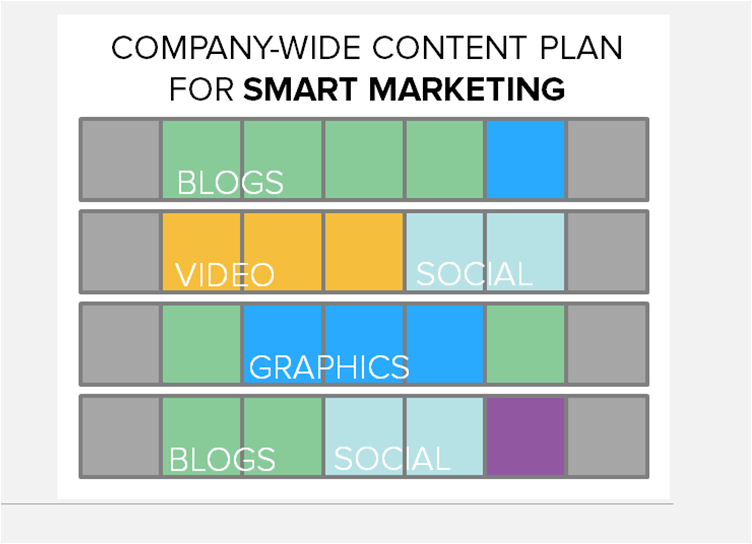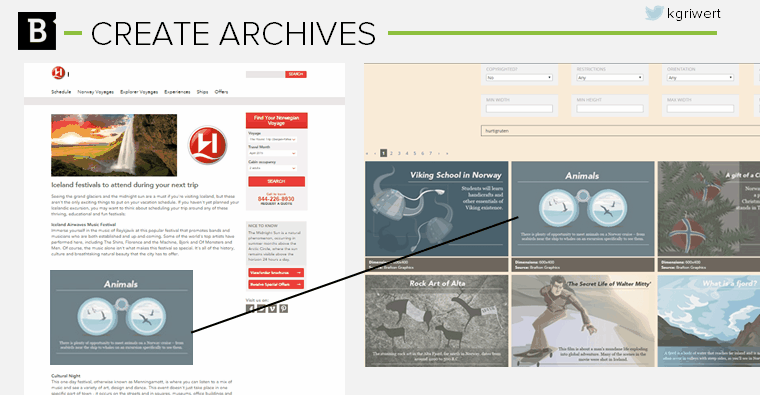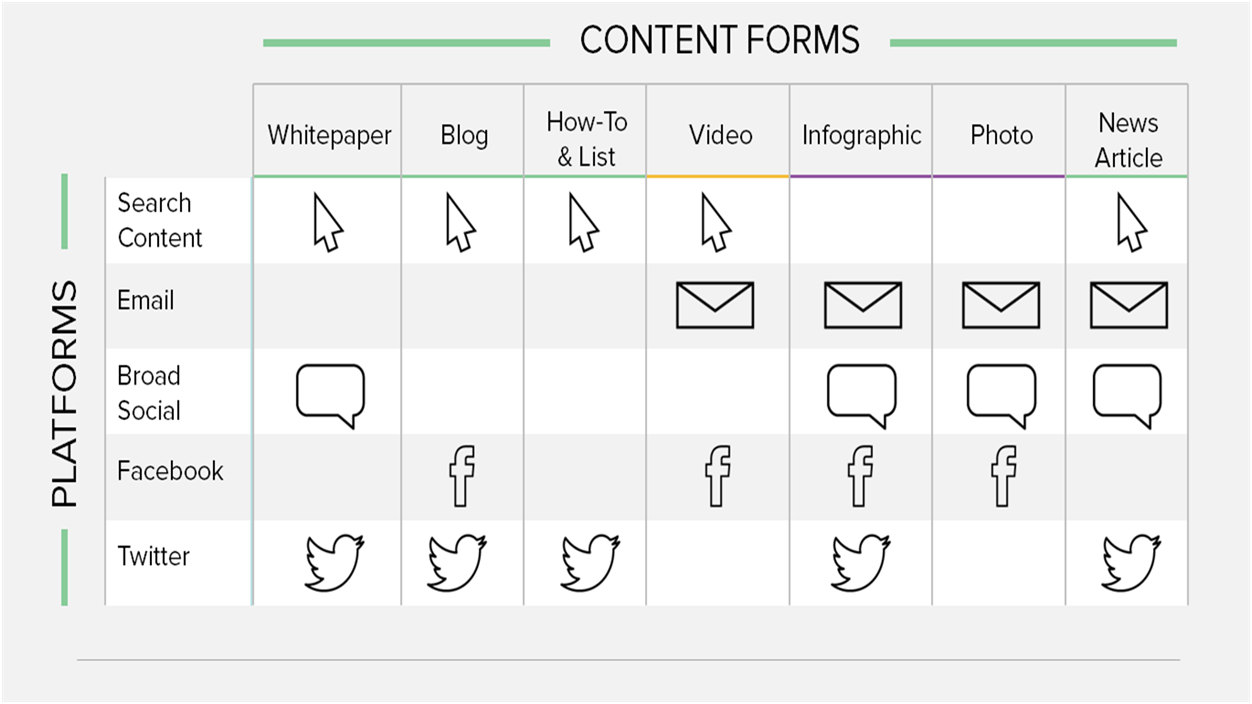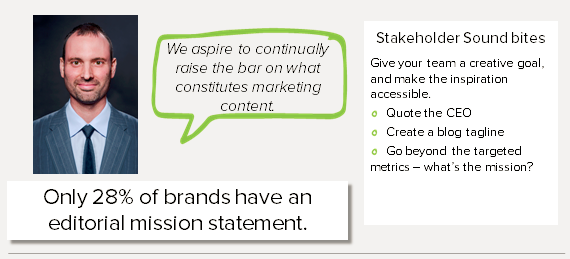Three out of four marketing blogs collect dust in brands’ archives, never to be re-promoted or repurposed again. Four out of four marketers agree they wish they were better equipped to get more out of each of their investments. Do you see where this is going?
For many businesses, the content creation process is broken. Here’s some evidence:
- The average business produces 14 different types of content, but half of all web posts are virtually unnoticed.
- While over half of brands will spend more money on content next year, only 42% of B2Bs think they’re effective with their current strategies.
- 80% of executives (CEOs, CMOS) believe their content calendars are set, but a full half of managers (tasked with actually creating the content) share this optimism.
Repurposing: A mindset to make the MOST of your investments
One of the most talk-about trends for content marketing in the New Year is repurposing your content. Our team defines repurposing as using the components of one strong piece of content to create an abundance of assets for cross-channel marketing.

4 Ways to implement an effective repurposing plan
1. Build a shared calendar for ALL of your creative teammates.
It can take over 4 weeks for teams to create high-investment pieces, like a corporate video promo or an eBook. In that time, the other creative teammates producing your content should build on each other’s work. Turn future eBook graphics into a calendar of mini social posts related to the same asset. Use sound bites from video interviews to fuel written interviews for the website, or to include in industry lists and articles.

2. Define and distribute an editorial mission statement.
Many roles, one goal. You want different members of your team to transform one asset into something that works for their particular medium. It’s helpful to provide a simple tagline that gives your content within a business and brand goal – and not a statement of desired results, like brand awareness as indicated by traffic… Measureable results are important, but an editorial mission statement puts creative teams in the driver’s seat to find the part of another asset that best helps them hit the mark on their project.
Read more about creating an editorial mission statement, and other useful ideas, in this roundup of takeaways from Search Engine Journal Summit: Super Simple Content Marketing Tips via the Experts at SEJ Summit
3. Use technology to build accessible archives for re-use.
A good content management system should enable you to put snippets of infographics (and infographics, themselves) in an accessible reservoir so teams of writers can add them to blog posts, or video teams can reuse them to get a jumpstart on animations.

Bonus tip: Don’t put all of the repurposing onus on people – use an automation platform (at Brafton, we use Marketo). Input different graphics, or add content to nurture streams in emails. This way, the most relevant that resurface your content via CTAs or follow-up notes to cookied users who take desired actions on your website.
4. Create a repurposing cheat sheet.
You can use industry data, your own analytics or some combination of the two (as we do below) to highlight what types of content perform best on different networks. When the calendar is being created, you’ll have a sense of smart ways to repurpose one story that’s on your site into content for another medium. Laying this information in a team-circulated cheat sheet empowers cross-department collaborators to make smart suggestions or fast decisions.






